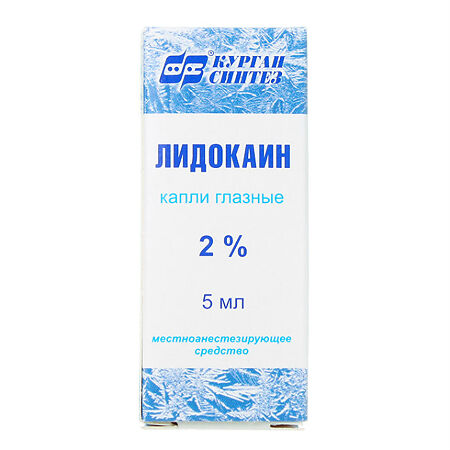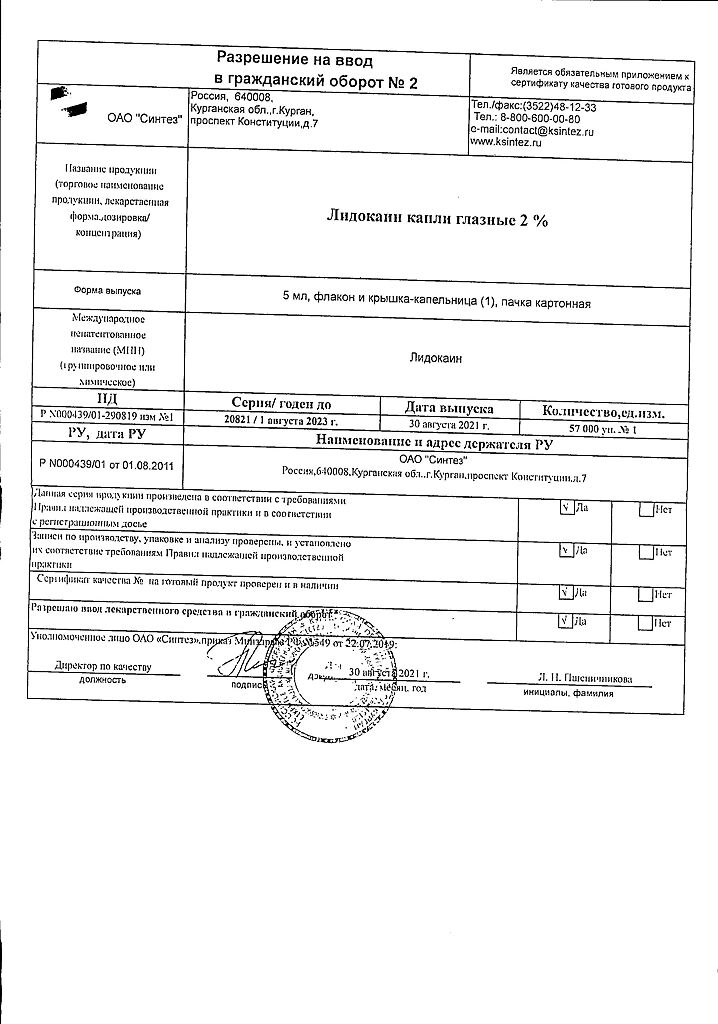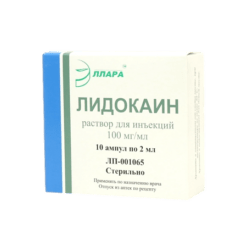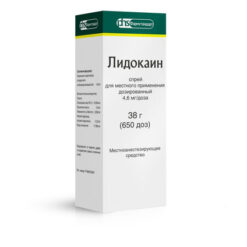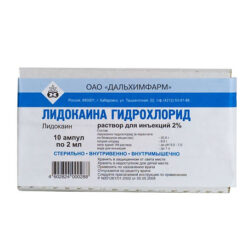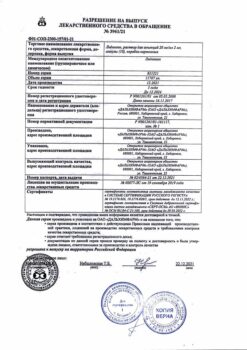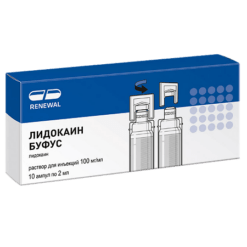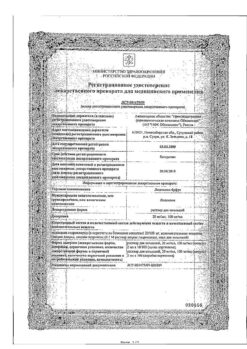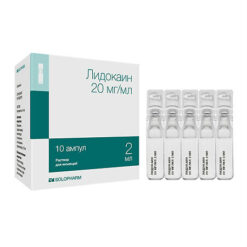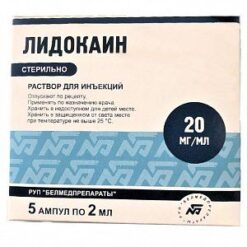No products in the cart.
Lidocaine, eye drops 2% 5 ml
€1.08 €0.00
EAN: 4602565021351
SKU: 124847
Categories: Anesthesia and resuscitation, Local anesthetics, Medicine
Description
Lidocaine is a local anesthetic and antiarrhythmic drug.
The antiarrhythmic activity is due to inhibition of phase 4 (diastolic depolarization) in Purkinje fibers, reduction of automaticity, suppression of ectopic foci of excitation. The rate of rapid depolarization (phase 0) is not affected or slightly reduced.
increases membrane permeability to potassium ions, accelerates the process of repolarization and shortens the action potential.
After injection into the conjunctival sac, the local anesthetic effect is achieved in 2-3 minutes and lasts for at least 6-8 minutes.
Indications
Indications
In ophthalmology:
when conducting contact research methods (tonometry, gonioscopy, diagnostic corneal scraping);
short-term surgical interventions on the cornea and conjunctiva (including removal of a foreign body and suture material);
preparation for ophthalmological operations.
Pharmacological effect
Pharmacological effect
Lidocaine is a local anesthetic and antiarrhythmic drug.
Antiarrhythmic activity is due to inhibition of phase 4 (diastolic depolarization) in Purkinje fibers, a decrease in automaticity, and suppression of ectopic foci of excitation. The rate of rapid depolarization (phase 0) is not affected or slightly reduced.
Increases membrane permeability for potassium ions, accelerates the repolarization process and shortens the action potential.
After installation into the conjunctival sac, the local anesthetic effect is achieved within 2-3 minutes and lasts for at least 6-8 minutes.
Active ingredient
Active ingredient
Lidocaine
Composition
Composition
Eye drops 2% are transparent, colorless or slightly colored.
1 mllidocaine hydrochloride 20 mg
Excipients:
benzethonium chloride,
sodium chloride,
water d/i.
Pregnancy
Pregnancy
The drug should be used with caution during pregnancy and lactation.
It is unknown whether lidocaine is excreted in breast milk. Caution should be exercised when prescribing the drug to a nursing mother.
During lactation, the use of the drug is possible after a preliminary careful assessment of the expected benefits of therapy for the mother and the potential risk for the infant.
Use in children
The drug should be used with caution in children.
Contraindications
Contraindications
Hypersensitivity.
The drug should be used with caution in children.
Side Effects
Side Effects
Local reactions: a slight burning sensation, which disappears as the anesthetic effect develops (within 1 minute).
Interaction
Interaction
It is not advisable to combine lidocaine with the following drugs:
With beta-blockers due to increased toxic properties of lidocaine, with digitoxin – due to a weakening of the cardiotonic effect, with curare-like drugs – muscle relaxation increases.
It is irrational to prescribe lidocaine together with ajmaline, amiodarone, verapamil or quinidine due to increased cardiodepressive effects.
The combined use of lidocaine and procainamide can cause central nervous system stimulation and hallucinations.
With intravenous administration of hexenal or thiopental sodium against the background of the action of lidocaine, respiratory depression is possible.
Under the influence of MAO inhibitors, the local anesthetic effect of lidocaine is likely to be enhanced.
When lidocaine and polymyxin are prescribed simultaneously, the inhibitory effect on neuromuscular transmission may be enhanced, so in this case it is necessary to monitor the patient’s respiratory function.
With the simultaneous use of lidocaine with sleeping pills or sedatives, their inhibitory effect on the central nervous system may be enhanced. When lidocaine is administered intravenously to patients taking cimetidine, undesirable effects such as stunned state, drowsiness, bradycardia, parasthesia, etc. are possible.
This is due to an increase in the level of lidocaine in the blood plasma, which is explained by the release of lidocaine from its binding to blood proteins, as well as a slowdown in its inactivation in the liver. If combination therapy with these drugs is necessary, the dose of lidocaine should be reduced.
Pharmaceutical interactions
When used concomitantly, the following drugs increase the concentration of lidocaine in the blood serum: aminazine, cimetidine, propranolol, pethidine, bupivacaine, quinidine, disopyramide, amitriptyline, imipramine, nortriptyline.
Storage conditions
Storage conditions
Store in a place protected from light, out of reach of children, at a temperature of 15° to 25°C.
Shelf life
Shelf life
2 years. After opening – 1 month.
Manufacturer
Manufacturer
Sintez, Russia
Additional information
| Shelf life | 2 years. After opening – 1 month. |
|---|---|
| Conditions of storage | Store in a dark place out of the reach of children at 15 ° to 25 ° C. |
| Manufacturer | Sintez OAO, Russia |
| Medication form | eye drops |
| Brand | Sintez OAO |
Other forms…
Related products
Buy Lidocaine, eye drops 2% 5 ml with delivery to USA, UK, Europe and over 120 other countries.

